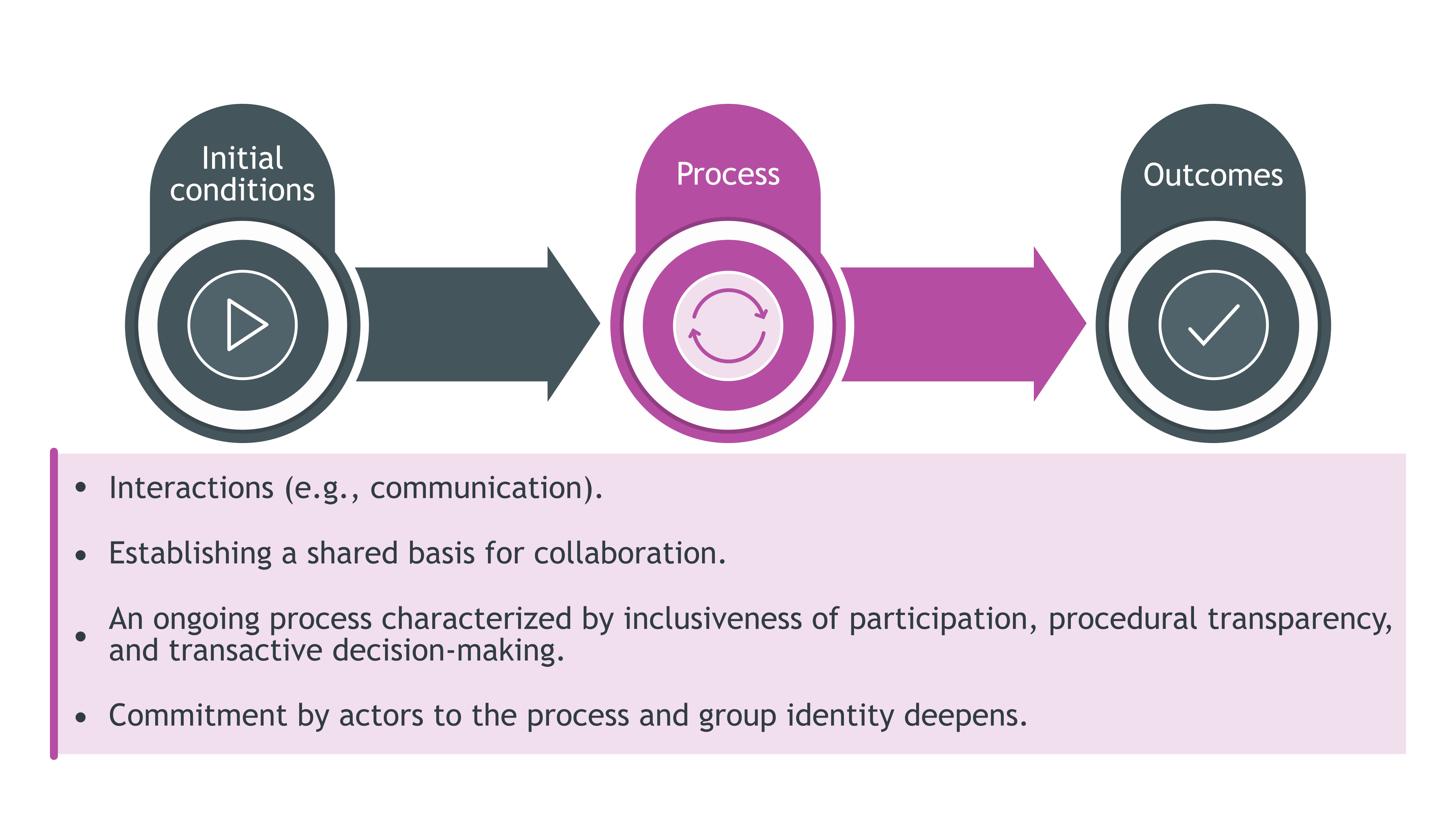Process

Particular characteristics of the collaborative process can be specific to process type, but we can also synthesize some common aspects general to all:
Interactions
Interactions among individuals (often face-to-face) is the quintessential characteristic of the collaborative process. Attention to all aspects of respectful communications and openness are key. For example, the timeline of communicating with Indigenous rights holders, which needs to occur prior to other stakeholders.
Establishing a shared basis for collaboration
Common problem definition, recognition of mutual interdependence, and shared understanding are characteristics early in the process and galvanize the rationale for collaboration.
Inclusiveness of participation, procedural transparency, and transactive decision-making
Extensive scholarship has been dedicated to the design of collaborative processes. Characteristics here entail inclusiveness of participation, procedural transparency, and transactive decision-making.
Commitment by actors to the process
As the collaborative process evolves, the commitment by the actors to the process and group identify may deepen. Here we see characteristics of direction setting (establishing goals), structuring (formalizing relationships), engaging in shared actions, learning, and ultimately monitoring and evaluation.

